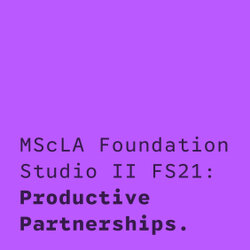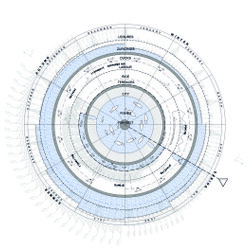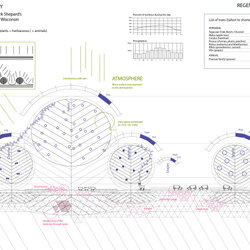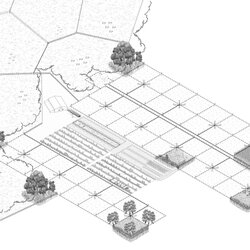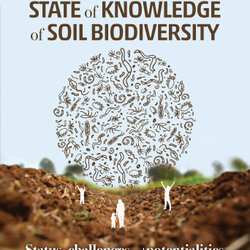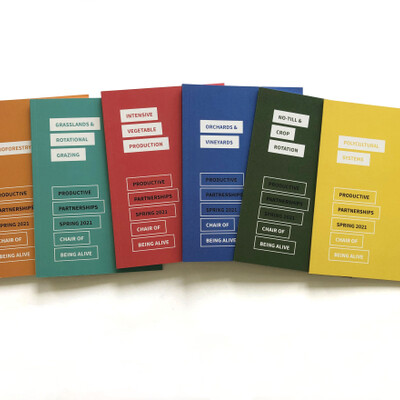
FS21 Productive Partnerships: Research Dossiers
A collection of dossiers that summarize, synthesize key strategies developed in the field of regenerative agriculture.
The last decades have seen an evolution of agricultural techniques and practices around the globe that reflect an evolving understanding of the relationship between natural resources, ecology, and land management. From the proliferation of organic food at large supermarkets to the desire for local, seasonal produce in urban areas, the way we eat and grow food today is different from the previous generation.
Or is it? Many of these changes in how we eat are reducing some of the harmful effects of our agricultural system on the environment, but at the same time many of these so-called new models of agriculture are reproducing the same extractive and damaging logics that they attempt to escape.
Most notable among these changes is the increase in demand for organic food. This method of agriculture avoids the application of additives, chemicals, or pesticides that have been shown to have detrimental effects on the health of humans, other living beings, ecosystems, and the environment at large. But apart from this baseline, not all organic food production follows the same set of techniques and principles, and as the production and certification of organic food has become an increasingly lucrative industry, it has been incorporated into the existing framework agricultural framework. Within the panorama of organic growing methods are a variety of practices, some of which are based on opposing principles. On one extreme is a highly technical bio-industry where food is produced under tightly-controlled environments. The methods used here, including hydroponics and 3d-printed food, tend to mirror non-organic industrial practices in that they hold a central goal of maximum output with an over-reliance on technology and little regard for the ancillary effects. On the other end of the spectrum, some smaller-scale organic operations try to take a more holistic approach, applying ecological principles to create artificial ecosystems driven by—rather than dictating—the management of natural processes. These farms plug into existing site-specific ecological dynamics, focusing not only on healthy food production but also on perpetuating the environmental conditions necessary for healthy food production. Soil regeneration is one such condition—a critical piece to a sustainable agricultural system that is patently missing from larger-scale operations, organic as well as conventional.
A relational understanding between agricultural practice and the environment in which it is embedded has been evolving in the last century through. Often building on the knowledge and methods of cultivation developed by indigenous farmers, the work of multi-disciplinary pioneers around the world have developed the conceptual and practical frameworks for regenerative agriculture. These thinkers and practitioners have a varied but largely shared vision of reducing the negative environmental and health impacts of current agricultural practices. Their combined efforts are a reaction to the negative effects of increasingly industrialized agricultural practices. These works catalyzed a growing call to radically change the way we produce food. Farmers, activists, and private institutions have developed new and often experimental techniques that understand soil as a living resource requiring holistic management. These initial experiments have developed into the fields of natural agriculture, permaculture, biodynamic agriculture, agro-ecology, and regenerative agriculture, each with distinctive variations and results published in a growing range of scientific publications in the last twenty years.
We see potential for developments in the loosely-defined field of regenerative agriculture to expand and transform the practice of landscape architecture. These dossiers provide examples of a selection of techniques from farms around the world. Each document puts multiple practitioners in dialogue with one another because the practices are contested and ever-evolving.
Many of the farms included in the dossiers attempt to restore damaged soil that exists on site. This method draws from local ecological processes in order to realize the full and sustainable potential of soil in agricultural practices. Healthy, living soil is more than mere dirt; it is a biological entity with its own structure and integrity that is particular to a specific geologic and climatic situation. Across diverse geographies, innovative practitioners focus their energy and creativity on restoring life to the soil, and the production of nutrient-rich food for humans emerges from this practice of “soil farming.” Alongside the development of these agricultural techniques, there has been a growing body of work linking the adverse impacts of industrial agricultural operations on climate change. These works recognize the potential of atmospheric carbon sequestration as a critical tool for soil regeneration. While it is impossible to ameliorate increasing CO2 levels while continuing to burn fossil fuels at current rates, capturing carbon from the atmosphere in soil presents a viable carbon storage strategy while, importantly, providing an alternative agricultural practice that is less reliant on fossil fuel consumption.
Through the curation of key references, we want to synthesize current research on practices in agroforestry, rotational grazing, intensive vegetable production, no-till and crop rotation, polyculture, and orchards. We want you to study these examples and try to understand the logics that make them possible. What are the exchanges, inputs, and outputs? What role does timing and seasonal or annual cycles play? Can these different techniques be combined? Ultimately, we want you to understand the logics behind these agricultural systems, in order to allow them to transform the urban form and metabolism of the city. This is a clear challenge that has a huge potential to be explored through design proposals, integrated systems, and application of existing and new technologies.
